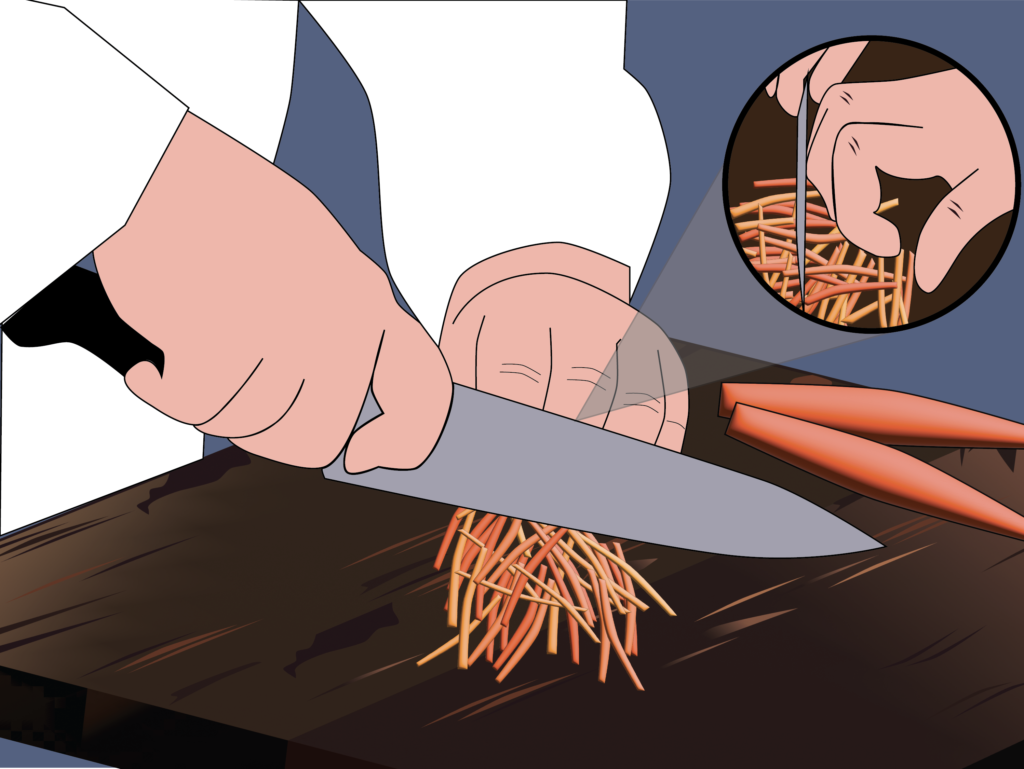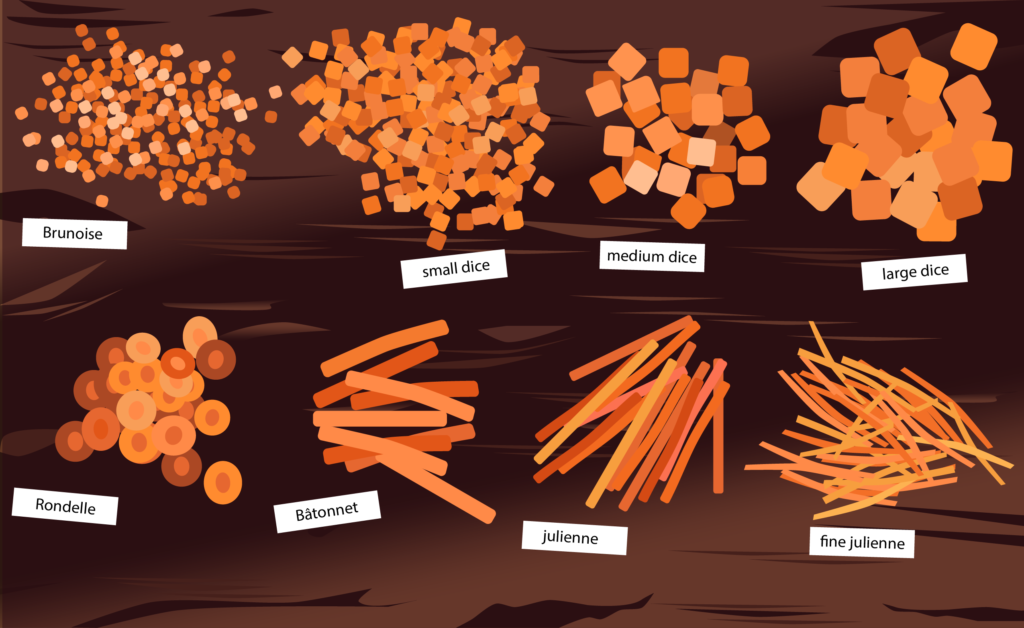A Guide To Learning Basic knife skills Essential To Working In A Professional Kitchen
Whether you are new to the industry or have been part of a kitchen crew or two—learning foundational knife techniques is as crucial to your role on the line as ensuring your food is cooked evenly. To help your shift go a little smoother, we’ve created a culinary crash course on how to build up basic knife skills.
Apart from the obvious safety concerns, having a good understanding of your knife’s capabilities and applications will help you advance your culinary career in the long run. Investing time and energy to build up your skill sets, especially basic knife skills, could be a great indicator to your employer that this isn’t just a stepping stone on your overall career path. It shows that you should be taken seriously as a culinary professional.
Knife Skill Test
We all know that prep work is a massive part of our day-to-day in food service. You won’t have quality prep without quality knife work. Usually, before a new chef gets hired, they are put through the old skills test, where they can exhibit their dexterity.
As a simple but effective method to test the quality of cuts—be prepared to dice up an onion, as this is usually all it takes for the best chefs to know if you have what it takes.
Basic Knife Safety
Staying safe could be the hardest skill to learn as it is so much easier to pick up (and hold on to) bad habits. Knowing the best way to hold a knife is paramount to having control of your blade.

How to Hold a Chef Knife Safely
- Hold the knife with the thumb and forefinger wrapped around the bolster towards the heel, giving you a tighter range of motion for maximum control.
- The other hand is “the Claw”— the thumb and pinky do all the heavy pushing, and the three other fingers are knuckles out, guarding your fingertips against the knife.
Cutting ingredients may seem like a tedious task that requires minimal attention, but that could result in major injury. Speed comes with practice and not having to stop after every other potato because you cut yourself, so, in the meantime, get a good grip.
Knife Cutting Techniques
Mastering knife cuts is integral to being a valued team member. Not only is it important for uniformity, but also offers visual appeal and enhances the overall mouth feel of the dish. In fast-paced professional kitchens, most chefs don’t have the time (or patience) to teach you these basic fundamentals on top of training.
So, before you even think about applying to that Line Cook position at the new James Beard award-winning restaurant, make sure you are at least familiar with these technical cuts.

Six Basic Knife Cuts
- Bâtonnet-Think french fries and crudite veggies, this literally translates to “small stick”. Cut produce into squared-off long rectangles that are ¼-inch by 2 inches thick. This cut offers a great starting point for more precise cuts as well.
- Julienne– This is more for toppings and garnishes. Julienne is the thinnest of the stick cuts, measuring at ⅛-inch wide.
- Dice– These are cubes that vary in size-small, medium, and large. When you’ve cut to batonnet, simply line them up crosswise and cut into cubes at the desired size. Carefully cut for uniformity.
- Brunoise– These are tiny cubes! These are the smaller versions of the dice, so line up the julienned pieces and cut them into 3mm cubes, as anything smaller is considered a mince.
- Rondelle– These are shaped like coins around ½-inch wide. Maintaining consistent thickness is crucial for this cut.
- Chiffonade-These are for those ribbons of aromatics or leafy greens. Stack the leaves flat, roll the leaves together tightly, then with the knife tip against the cutting board- cut into strips.
Learn Specialty Knife Skills
With the rise of food costs, restaurants are turning to more holistic perspectives by utilizing the whole nose-to-tail in efforts to make ordering goods more cost-efficient and to minimize waste. Finding a chef that knows how to properly fabricate fish and meats could make or break your margins.
Though most restaurants are buying subprimal, they still need additional butchering to be menu-ready. Not having knowledge and experience with efficiently breaking down these cuts will directly affect the restaurant’s overall plating and overhead.
To set yourself apart from the rest of the line– take a class on butchery to learn proficient boning, disjointing, and cutting skills.
Basic Knife Maintenance + Sharpening
You could possess all the technical abilities in the world, but your job will only be easier with properly-maintained tools. One rule to live by is to never keep a dull knife. Not only is it dangerous in a kitchen, but highly inefficient. No matter your knife’s price point, maintenance is necessary for it to last.
Whetstones are an easy-to-use sharpening tool, even for novice cooks. Just make sure to use the right angle and enough pressure when running the blade across the block. Honing rods are recommended for weekly use to remove the build-up that forms on the tips.
Having a better understanding of your knife and its capabilities will take your culinary career to new heights. More day-to-day chopping and cutting will only generate more confidence with your newfound skill set. Don’t skip out on building up this fundamental cornerstone or it could really hinder your work life.


